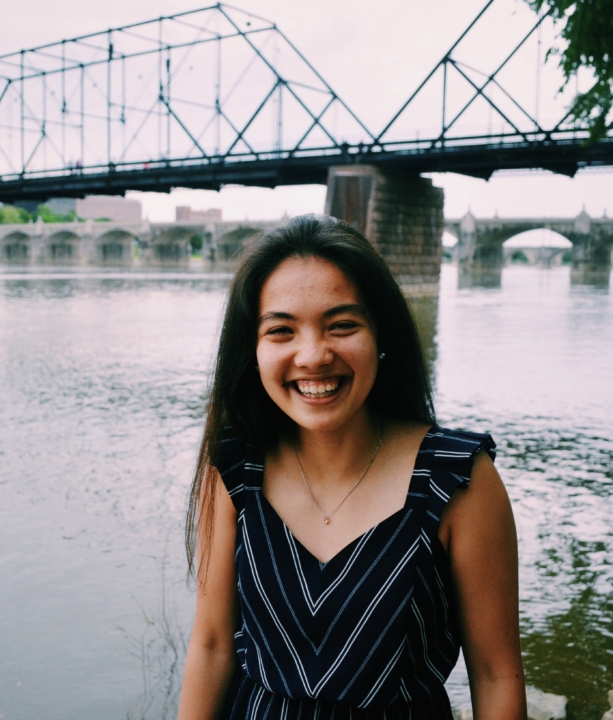In celebrating its 75th anniversary, the World Health Organization has recently called for a renewed drive for health equity — that is, the opportunity for everyone to achieve an optimal health status.
But what are some of the forces preventing this? Three William & Mary undergraduate researchers from across disciplines provided examples highlighting the relationship between health and structural racial discrimination.
From medical myths to racism under the guise of public health, the three students investigated health disparities and exclusionary policies from the late 19th century to the present.
Their research was presented at a recent panel as part of the latest William & Mary Scholars Undergraduate Research Experience conference, a student-led event happening in person for the first time this year. Now in its 13th year, the WMSURE program promotes strategies for academic success and undergraduate research, providing holistic support to high-achieving students from historically underrepresented, low-income and first-generation backgrounds. WMSURE alumni have pursued graduate and professional degrees at nationally ranked programs and have been hired by several private companies.
Research on health inequities may be of particular interest to the 200 W&M students who every year indicate an interest in a pre-medical track. This spring, Arts & Sciences added two more pre-med advisors to better meet student needs.
Race-based inequities in health care quality
A major in public policy and biology, Kiran Rachamallu ’23 had heard too many stories about patients from racially underrepresented backgrounds being dismissed by their medical providers. He had also witnessed some of these interactions firsthand.
“So, I wanted to see what was lining up in the actual data, since anecdotes can be dismissed as one-off experiences,” said Rachamallu, who turned to the Hospital Consumer Assessment of Healthcare Providers and Systems. As a standardized survey and methodology, the HCAPS survey collects information about patient experience nationwide. This instrument allows comparisons across hospitals with the aim to improve health care quality and accountability.
Using the HCAPS dataset, Rachamallu found that patients in majority-Black and Hispanic counties generally reported a more negative hospital experience. Specifically, a 10% increase in Black population within a given county was associated with a 4.75% decrease in rating across the county hospitals, whereas a 5% increase in Hispanic population was associated with a 7.85% decrease in hospital rating.
Rachamallu highlighted how such negative experiences could further contribute to medical mistrust, deterring people from seeking care and thus exacerbating existing health disparities. He also referred to medical mistrust as stemming from a documented history of abuse towards Black patients — such as the unconsented harvesting of cells from Henrietta Lacks and the USPHS Syphilis Study at Tuskegee.

Stereotyping, pointed out Rachamallu, was among the factors contributing to negative experiences. An oft-cited study of a sample of white medical students and residents showed that half of them believed at least one false fact about Black patients, such as “Black people feel less pain than white people.”
Rachamallu called for more oversight and guidance in medical training, and more awareness and advocacy in the patient community. He also highlighted the importance for hospitals to talk to their communities and hear their patients’ voices — for example through surveys or focus groups.
“Seeking care can be a scary experience in itself, even more so when you’re being looked at through the lens of preconceived notions,” said Rachamallu. “If we want health care to be more effective in the United States, we need to make sure that patients feel more taken care of and feel safe in this environment.”
Black women get eating disorders (too)
Another stereotype portrays Black women as immune to eating disorders. Not only is this incorrect; it also obliterates experiences that are unique to this demographic, discovered Lily Boone ’25, a psychological sciences major.
In her systematic review of 12 databases for studies covering 20 years, Boone identified specific factors that could contribute to Black women developing eating disorders or dissatisfaction with their bodies.
“One was binge eating as a coping mechanism against racism,” she said. “Not just binge eating in general, but due to the stress brought by discrimination, racism, microaggressions in their daily life.”
The American Psychological Association defines binge eating as an uncontrollable consumption of “abnormally large quantities of food,” leading to a diagnosis of binge eating disorder if it becomes chronic and pervasive.
Boone also cited acculturation as another contributing factor. She found that Black women aspiring to European, thin-centric beauty standards were more likely to develop an eating disorder.
“But in contrast to that, there was also the aspiration to an hourglass figure,” said Boone. “This pointed more to body dissatisfaction, to Black women wishing they had these very exaggerated features celebrated in pop culture and promoted by specific celebrities who are perceived as the most beautiful.”
Boone highlighted how Black women were referred for eating disorders at lower rates than white women. As contributing factors, she cited implicit bias and medical myths, underscoring the importance of having more Black, Indigenous, and people of color in the mental health space.

“If you have a certain experience because of the way you look, because of where you come from, it’s hard to open up when the person you’re trying to confide in doesn’t understand that,” said Boone.
Boone also pointed to systemic barriers in accessing medical care and healthy alternatives. In her research, she examined the likelihood of Black communities to be living in food deserts — areas with limited access to healthy and affordable food.
“It makes a difference when the food you’re consuming is actually nourishing you,” said Boone, who has always been interested in nutrition.
In the social media space, she noted, the dominant wellness aesthetics tend to focus on specific types of women and exclude others.
“It implies that only a certain type of person can take care of their health and celebrate that,” said Boone. “As a Black woman myself, I found it very empowering to do this research and bring these issues to the forefront.”
Perceptions of health and anti-Asian discrimination
When COVID-19 hit and anti-Asian hate spiked, it was not the first time that people of Asian origin were being blamed for the spread of disease in America.
Throughout the 19th century, new Chinese immigration to California had been framed as “a credible medical threat” by local doctors and public health officials, who were grappling with contagious disease outbreaks. In her paper, Claire Wyszynski ’23 argued that these forces played a role in the development of restrictive immigration legislation, such as the 1882 Chinese Exclusion Act.

“It’s important to pay attention to rhetoric around disease, because it can almost always be justified as positive policy,” said Wyszynski, a major in history and international relations who won a W&M Undergraduate Research Award.
Wyszynski cited the rise of “medicalized nativism,” a term coined by the historian Alan M. Kraut, in justifying the stereotyping and exclusion of immigrants. People subscribing to this notion viewed immigrants as naturally ill people who would “contaminate” white Americans through “alien” diseases brought from their homelands. The new “germ theory” arising in the 19th century seemed to substantiate those claims in the eye of the public, as well as the long legacy of pseudo race science.
When Asian people were stigmatized during the COVID-19 pandemic, were we faced with history repeating itself? Wyszynski, herself the daughter of a Korean immigrant, challenged this common trope, interpreting history more as a continuum than a cycle.
“When we say that history is repeating itself again, we’re dismissing the role of human actors making the choice of repeating racism and oppression, allowing for medicalized racism to continue to exist,” she said. “The specific actors can change, but their language and rhetoric are similar.”
Wyszynski mentioned the notion of “immunocapital” defined by the historian Kathryn Olivarius in her study of antebellum New Orleans. People perceived as having more immunity, explained Wyszynski, can get more social and political capital in their societies.
Tying perceived health status to racist and sexist stereotypes has powerful consequences, according to Wyszynski. This type of bias can further exacerbate existing disparities by denying access to opportunities such as quality health care.
“Medicalized nativism, medical biases against marginalized populations, are not going to disappear on their own,” said Wyszynski. “Now that we have the benefit of learning from the past, we have to realize that choosing the health of certain people over others is not a just way to do it.”
Antonella Di Marzio, Senior Research Writer
